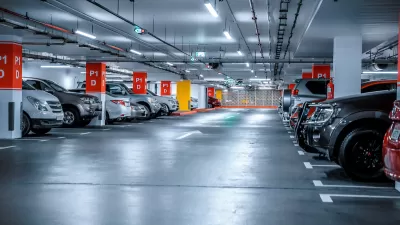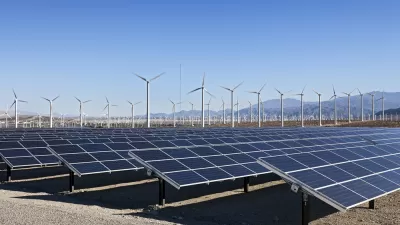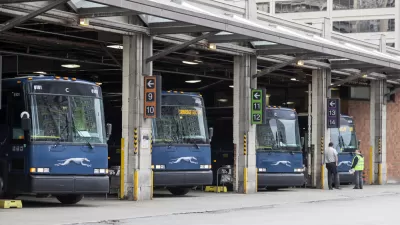Many ancient religions required animal sacrifice to satisfy their gods’ desires. We now sacrifice pelicans, marine mammals and sea turtles to satisfy our desire for cheap oil.
Many ancient religions required animal sacrifice to satisfy their gods' desires. We now sacrifice pelicans, marine mammals and sea turtles to satisfy our desire for cheap oil.

Everybody seems to agree that the Deep Water Horizon spill is a major catastrophe, but there are different interpretations of its policy implications. One narrative argues that oil spill risks are internalized to the petroleum industry through cleanup and compensation charges, and this is a unique accident from which industry will learn spill prevention techniques, so no policy changes are needed. The alternative narrative is that intensive petroleum production inevitably causes large external economic and environmental costs, so energy policy should be reformed to encourage conservation.
There is littel evidence that these costs are fully internalized (all costs are totally borne by consumers), or that the petroleum industry can prevent such spills in the future. The Deep Water Horizon is just the latest in a series of major oil spills:
- 1967 Torrey Canyon tanker spilled more than 600,000 barrels of crude oil off the Scilly Isles, UK.
- 1969 Union Oil Platform A spilled more than 80,000 barrels of oil off the Santa Barbara coast.
- 1972 Sea Star tanker spilled an estimated 900,000 barrels of oil off the coast of Oman.
- 1978 Amoco Cadiz tanker spilled about 1.5 million barrels of oil into the English Channel.
- 1979 Atlantic Empress tanker spilled more than 2 million barrels of oil near Trinidad and Tobago.
- 1979-1980 Ixtoc 1 Platform, spilled more than 3 million barrels of oil into the Gulf of Mexico.
- 1983 Castillo de Bellver tanker spilled nearly 2 million barrels of oil off South Africa.
- 1983 Nowruz, collision between a tanker and drilling platform, spilled about 2 million barrels of oil in the Persian Gulf.
- 1988 Odyssey tanker spilled about 1 million barrels of oil off the coast of Nova Scotia.
- 1980 Exxon Valdez tanker spilled about 250,000 barrels of oil along the Alaska coast.
- 1991 Haven Tanker spilled about 1 million barrels of oil off near Genoa, Italy.
- 1991 ABT Summer tanker spilled 1-2 million barrels of oil off the coast of Angola.
- 1994 Kolva pipeline spilled about 2 million barrels of oil into the Kolva River, Russia.
- 2010 Deep Water Horizon is spilling an estimated 20,000 to 60,000 barrels per day, or a million barrels every 20-50 days.
Ecosystems are resilient so after many years or decades spill damages decline, although they may not entirely disappear. Some ecosystem changes are irreversible, including species displacement or extinction, and destruction of critical habitat such as nurseries or feeding grounds. Some economic resources, such as fisheries, may never recover.
What do these damages cost? According to a new paper, A Taxonomy of Oil Spill Costs-What are the Likely Costs of the Deepwater Horizon Spill? by Professor Mark A.Cohen, previous U.S. oil spill cleanup and damage costs averaged approximately $16 per gallon ($672 per barrel), ranging from less than $7 per gallon ($300 per barrel) for the Ixtoc I spill in 1979 up to more than $630 per gallon ($25,000 per barrel) for the Exxon Valdez spill. At that rate, the Deep Water Horizon spill cleanup and compensation costs is likely to total between $50 billion and $500 billion, depending on the amount of oil ultimately released, cleanup costs, and how the legal system awards compensation.
Assuming that the Deep Water Horizon spill's cleanup and compensation costs total $100 billion, and that such major spills occur about once a decade in North America, this suggests that major oil spill damage costs average about $10 billion annually, or about 2% of total North American petroleum gross sale value.
However, cleanup and compensation payments do not necessarily reflect total environmental damage costs. Many costs are uncompensated because:
- Some damages (such as loss of income or property value) are difficult to legally prove, for example, to businesses that lack adequate proof of income loss, and to people who lose favorite fishing sites and swimming beaches.
- Many legal systems cap awards, and it is a general economic principle that damage compensation awards should not be overly generous to discourage people from encouraging accidents for the sake of compensation. As a result, compensation seldom offsets total losses.
- Compensation is generally only paid for direct human losses, there are often no payments for ecological damages such as injuries and deaths to plants and animals (what ecological economists call natural capital).
- Environmental damages in international waters are particularly difficult to compensate since property rights are often ambiguous.
According to Professor Cohen, the lower-bound estimate of the public's willingness to pay to avoid the Valdez spill wildlife damages was $2.8 billion, about 75% of the total cleanup and compensation costs, and three times the $1 billion paid in natural resource damages fees. This suggests that total environmental costs, and society's willingness to pay to avoid such damages, are two or three times higher than expenditures on damage cleanup and compensation.
Major oil spills are just one source of environmental damages caused by petroleum production, processing and distribution. Others include damages from exploration (sonar surveys are particularly harmful to marine mammals), landscape damages and pollution emissions from drilling activities and refineries, and smaller spills during transport. Most of these damages are legally permitted or difficult to measure and therefore compensate. For these reasons, for each dollar petroleum companies pay in cleanup and compensation costs there are probably two to five dollars in uncompensated environmental damages.
Petroleum production environmental risks are likely to increase in the future, based on projections by the U.S. Energy Information Administration's Energy Outlook report, which predicts (in Chapter 4) that the U.S. will significantly increase offshore production (primarily in the Gulf of Mexico), plus production of biofuels, oil shales and coal liquification, all environmentally risky sources. This suggests that petroleum production environmental costs probably total tens of billions of dollars annually in North America. Yet, these are not the largest petroleum consumption external costs. According to various studies by academic researchers and U.S. federal agencies, dependency on petroleum imposes hundreds of billions of dollars in external costs. For example:
- A 2007 federal report estimates U.S. petroleum import external economic costs, excluding military expenditures, total $54 billion annually.
- An Environmental Law Institute study estimates federal subsidies for fossil fuel and renewable energy production totaled approximately $72 billion for fossil fuels between 2002 and 2008.
- Greene and Ahmad estimated that oil dependence cost the U.S. economy $150-$250 billion in 2005, and a total of $5 to $13 trillion (constant 2000 dollars) between 1970 and 2005.
- A National Defense Council Foundation study estimates that the external costs of US oil imports increased from $305 billion in 2003 to $825 billion in 2006.
For these reasons, policies that encourage high levels of petroleum consumption are not only environmentally harmful, they are economically irrational. This is not entirely unnoticed. U.S. presidents have talked the energy independence talk for decades, but national policy and consumption patterns have not changed, in fact, the result is often an increase in subsidies for domestic production, such as off-shore oil, so the U.S. continues to consume more petroleum per capita than most other wealthy countries, and as a result continues to bear large economic, military and environmental costs.
Advocates of the status quo argue that Americans must increase oil production to meet growing consumer demand, but this misrepresents the issue, since demand for oil depends on policies such as fuel, road, parking and insurance pricing, and planning decisions that affect transport options and land use development patterns. Current U.S. policies underprice petroleum and favor automobile transportation and sprawl, while most other wealthy countries have policies that favor energy conservation, multi-modal transport and smarter growth, and so consume far less fuel per capita.
For example, if fuel is cheap, transportation systems automobile-dependent, and communities sprawled, an average resident will drive 20 mpg vehicles 16,000 annual miles, consuming 800 gallons of fuel annually. However, if fuel is more costly, transport systems are multi-modal, and communities more accessible, average residents will drive 35 mpg vehicles 8,000 annual miles, consuming 230 gallons of fuel annually. For the U.S., this would nearly eliminate the need to import petroleum and reduce the need to expand deep ocean oil production. In other words, cheap fuel is not really cheap, it shifts and increases total petroleum costs.
Below is a list of smart transportation energy conservation strategies that can significantly reduce the amount of energy consumers demand.
Smart Transportation Energy Conservation Strategies
- Planning Reforms - More comprehensive and neutral planning and investment practices.
- Transportation Demand Management Programs - Local and regional programs that support and encourage use of alternative modes.
- Road Pricing - Charges users directly for road use, with rates that reflect costs imposed.
- Parking Pricing - Charges users directly for parking facility use, often with variable rates.
- Parking Cash-Out - Offers commuters financial incentives for using alternative modes.
- Pay-As-You-Drive Pricing - Converts fixed vehicle charges into mileage-based fees.
- Fuel Taxes- Tax Shifting - Increases fuel taxes and other vehicle taxes.
- Transit and Rideshare Improvements - Improves transit and rideshare services.
- Walking and Cycling Improvements - Improves walking and cycling conditions.
- Carsharing - Vehicle rental services that substitute for private automobile ownership.
- Smart Growth Policies - More accessible, multi-modal land use development patterns.
- Freight Transport Management - Encourage businesses to use more efficient transportation options.
These are no-regrets reforms, since they provide significant co-benefits (congestion reductions, road and parking facility cost savings, consumer savings and affordability, accident reductions, improved mobility for non-drivers, more efficient land use development, and improved public fitness and health) and so are justified regardless of the value placed on energy conservation and emission reductions.
Crises may come and go, but smart solutions remain. Pelicans or petroleum? The best policies are clear, and so can be our priceless waterways.
For More Information
Mikhail Chester and Arpad Horvath (2008), Environmental Life-cycle Assessment of Passenger Transportation, UC Berkeley Center for Future Urban Transport, (www.its.berkeley.edu/volvocenter/), Paper vwp-2008-2; at www.sustainable-transportation.com.
David Coady, et al. (2010), Petroleum Product Subsidies: Costly, Inequitable, and Rising, International Monetary Fund (www.imf.org); at www.imf.org/external/pubs/ft/spn/2010/spn1005.pdf.
Mark A.Cohen (2010), A Taxonomy of Oil Spill Costs-What are the Likely Costs of the Deepwater Horizon Spill?, Resources for the Future (www.rff.org); at www.rff.org/rff/documents/RFF-BCK-Cohen-DHCosts_update.pdf.
Robert Costanza, et al. (2010), The Perfect Spill: Solutions for Averting the Next Deepwater Horizon, The Solutions Journal (www.thesolutionsjournal.com); at www.thesolutionsjournal.com/node/629.
Mark Delucchi (2005), The Social-Cost Calculator (SCC): Documentation of Methods and Data, and Case Study of Sacramento, UCD-ITS-RR-05-37, Institute of Transportation Studies (www.its.ucdavis.edu); at www.its.ucdavis.edu/publications/2005/UCD-ITS-RR-05-18.pdf.
Earth Track (www.earthtrack.net) documents energy subsidies and market distortions.
ELI (2009), Estimating U.S. Government Subsidies to Energy Sources: 2002-2008, Environmental Law Institute (www.eli.org); at www.elistore.org/Data/products/d19_07.pdf.
Jennifer Ellis (2010), The Effects Of Fossil-Fuel Subsidy Reform: A Review Of Modelling And Empirical Studies, Global Subsidies Initiative (www.globalsubsidies.org); at www.globalsubsidies.org/files/assets/effects_ffs_0.pdf.
Paul N. Leiby (2007) Estimating the Energy Security Benefits of Reduced U.S. Oil Imports, Oak Ridge National Laboratory (www.ornl.gov); at http://pzl1.ed.ornl.gov/Leiby2007%20Estimating%20the%20Energy%20Security%20Benefits%20of%20Reduced%20U.S.%20Oil%20Imports%20ornl-tm-2007-028%20rev2007Jul25.pdf.
Todd Litman (2008), Smart Transportation Emission Reduction Strategies, VTPI (www.vtpi.org); at www.vtpi.org/ster.pdf.
Todd Litman (2010), "Resource Consumption Externalities," Transportation Cost and Benefit Analysis, Victoria Transport Policy Institute (www.vtpi.org); at www.vtpi.org/tca/tca0512.pdf.
Gerhard Metschies (2005), International Fuel Prices 2005, with Comparative Tables for 172 Countries, German Agency for Technical Cooperation (www.internationalfuelprices.com).
NRC (2009), Hidden Costs of Energy: Unpriced Consequences of Energy Production and Use, National Research Council (www.nap.edu/catalog/12794.html).
John Stewart (2010), Addressing Our "Addiction To Oil": Have We Heard This Before? The Daily Show, 16 June 2010 (www.planetizen.com/node/44716).
VTPI (2008), "Energy and Emission Reductions," Online TDM Encyclopedia, VTPI (www.vtpi.org); at www.vtpi.org/tdm/tdm59.htm.

Alabama: Trump Terminates Settlements for Black Communities Harmed By Raw Sewage
Trump deemed the landmark civil rights agreement “illegal DEI and environmental justice policy.”

Study: Maui’s Plan to Convert Vacation Rentals to Long-Term Housing Could Cause Nearly $1 Billion Economic Loss
The plan would reduce visitor accommodation by 25% resulting in 1,900 jobs lost.

Why Should We Subsidize Public Transportation?
Many public transit agencies face financial stress due to rising costs, declining fare revenue, and declining subsidies. Transit advocates must provide a strong business case for increasing public transit funding.

Paris Bike Boom Leads to Steep Drop in Air Pollution
The French city’s air quality has improved dramatically in the past 20 years, coinciding with a growth in cycling.

Why Housing Costs More to Build in California Than in Texas
Hard costs like labor and materials combined with ‘soft’ costs such as permitting make building in the San Francisco Bay Area almost three times as costly as in Texas cities.

San Diego County Sees a Rise in Urban Coyotes
San Diego County experiences a rise in urban coyotes, as sightings become prevalent throughout its urban neighbourhoods and surrounding areas.
Urban Design for Planners 1: Software Tools
This six-course series explores essential urban design concepts using open source software and equips planners with the tools they need to participate fully in the urban design process.
Planning for Universal Design
Learn the tools for implementing Universal Design in planning regulations.
Smith Gee Studio
Alamo Area Metropolitan Planning Organization
City of Santa Clarita
Institute for Housing and Urban Development Studies (IHS)
City of Grandview
Harvard GSD Executive Education
Toledo-Lucas County Plan Commissions
Salt Lake City
NYU Wagner Graduate School of Public Service






























